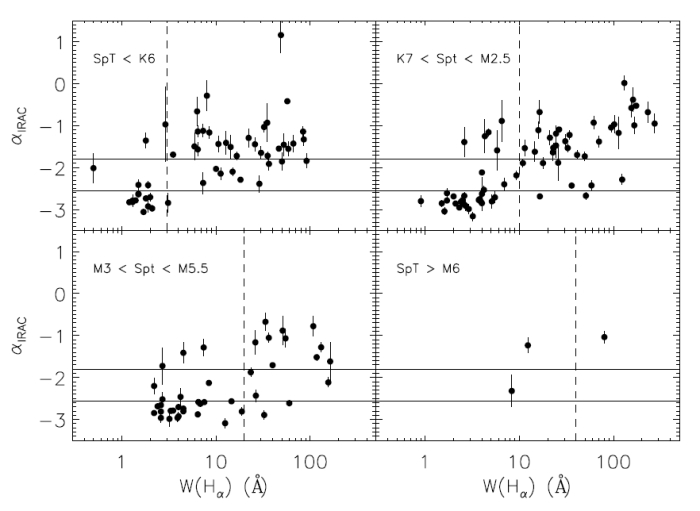| EPoS Contribution |
|
Spitzer's view of NGC2264's disk population
Paula Stella Teixeira ESO Garching, Germany | |
| We present the results of a multi-wavelength observational study of the disk population in the young cluster NGC2264. The observations discussed here consist of data obtained with the Infrared Array Cam- era (IRAC) and Multiband Imaging Photometer on board the Spitzer Space Telescope, combined with deep ground-based near-infrared (NIR) FLAMINGOS imaging data and previously published optical data. We identified those sources detected in all four IRAC bands that have excess emission characteristic of cir- cumstellar disks. We divide the disk population into 3 classes based on their spectral energy distribution shapes (measured by the IRAC slope): (i) optically thick disks, (ii) homologously depleted anemic disks, and (iii) radially depleted transition disks. We hypothesize that there may be two distinct evolutionary paths for disks: a homologous one where the disk emission decreases uniformly in NIR and mid-infrared wavelengths (anemic disks) and throughout which most sources pass, and a radially differential one where the emission from the inner region of the disk decreases more rapidly than from the outer region (transition disks). Whether a disk evolves in a homologously or radially depleted fashion may depend on the nature of planet formation in the disk. | |
 | |
| Caption: Comparison of the Halpha equivalent width with IRAC spectral indices for sources of different spectral types. The horizontal lines mark the separation between diskless sources (aIRAC < -2.56), sources with anemic disks, and sources with thick disks (aIRAC > -1.8), while the vertical dashed lines separate accreting sources from non-accreting sources. The WHalpha accretion boundary is a function of spectral type. | |
| Collaborators: C. J. Lada, CfA, USA M. Marengo, CfA, USA E. A. Lada, University of Florida, USA E. Young, Steward Observatory, USA |
Key publication
Suggested Session: Early Phases of Disks |

